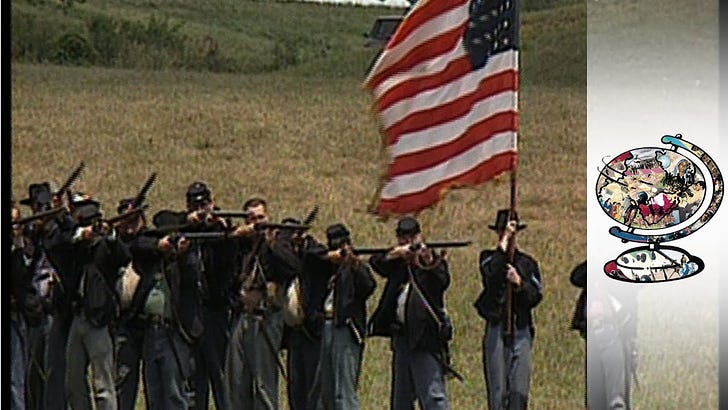It’s hard to believe that roughly twenty-five years has passed since this video was produced. Civil War reenacting was still fairly popular in the latter half of the twentieth century. There was very little controversy about men dressing up in Confederate uniforms, flying the Confederate flag, and exhuding a palpable nostalgia for their Lost Cause.
There even appears to have been very little thought about dressing up in black face and performing minstrel songs as a form of entertainment, of course, all in the name authenticity.
The video includes an interview with Robert Lee Hodge, who graced the cover of Tony Horwitz’s bestselling book, Confederates in the Attic, in 1998. Hodge talks about his reenacting experiences and some of the extreme steps he takes to achieve a personal connection to the past.
At the same time, the interviews with reenactors points to the ways in which this hobby has always been about dealing with or coping with contemporary challenges.
Much has changed since then. There are fewer large-scale battle reenactments and the public has very little patience with anything that appears to honor the Confederate soldier and the Confederacy. No questions asked.
I understand this attitude, but I do hope that we can continue to leave room for living historians, whose portrayals have the potential to offer great insight into the past.




I was engaged with the hobby during the late 90’s. This included participation in the huge 1998 Gettysburg reenactment that, as a collective experience, embodied all that was both good and bad with the hobby. On a personal level, I had little interaction with “hardcore” types whose preparation for events took on aspects of method acting. Most of the men and women that I encountered were white collar folks with disposable income and a deep interest in history. That many of them—blue and gray—held onto a perspective that was heavily influenced by the Lost Cause, is another discussion. Interestingly, what would drive many of them from the hobby was the increased commercialization of large-scale events, which drove up costs for participants. The fact that few children of reenactors followed their parents into the hobby, in addition to the fact that many younger folks in the 2000’s had neither the time or the disposable income of their parents, was a big factor driving down involvement. It is a very expensive hobby.
You did an online interview with members of the 54th Massachusetts reenactors. Are they still in existence?